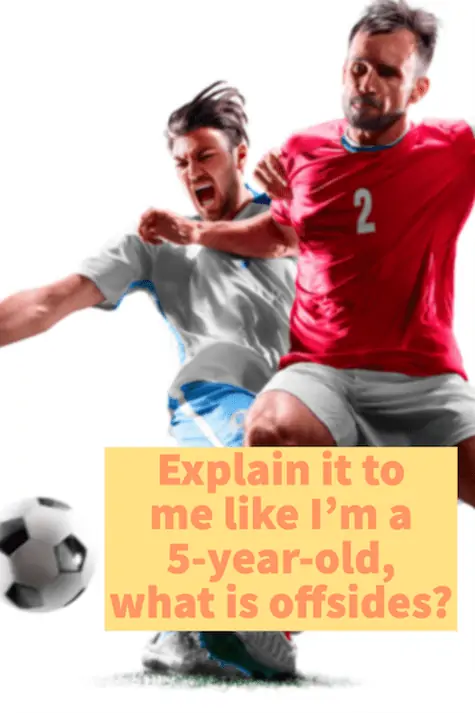Offside infractions have often impacted numerous important championship-level matches in the history of soccer. In the past, many players could escape this offense in several crucial moments. However, the advent of VAR has made it impossible for anyone to get away from it.
We often see players turning their heads toward the sideline as soon as they score. They do so to see if any of the linesmen have raised their flags. The goal is not accepted if any flag is raised. Thus, players who begin early celebrations without making sure it’s not offside are often disappointed.
When a player is past the defenders’ line and next to the opponent’s goalpost, the referee raises his flag for an offside foul. This happens as soon as the offender’s teammate hits the ball, and an indirect free kick is offered.
Defenders often use an offside trap by staying as far away from the goalpost as possible. As a result, the strikers also stay away from the goal.
The offside rule does not sound very complicated, but there are various details that every soccer player needs to understand. Being aware of the complexities of offside makes it convenient for the defenders to set an offside trap. It, however, also allows the offenders to escape this trap.

Essential Details to Understand the Rules of Offside Offense
Here are some specific questions and answers related to the offside rule.
What is an offside?
Imagine yourself as a player on the opponent’s side of the football pitch. If any part of your body is closer to the goalpost than the nearest defender of the opponent, the ref will raise the flag as soon as your teammate passes the ball to you.
See 100+ Funny Soccer Jokes, Puns, and Riddles.
Who calls an offside?
If you have watched any soccer matches, you must have seen two referees constantly running on the field’s sidelines. These linesmen are assistants to the referees, who call the offsides based on their judgment.
What happens when an offside is called?
Soccer fans often see players turning their faces to the sidelines after they hit a goal to check the flag. If the linesman raises the flag to give offside, the goal is not considered, and the other team also gets an indirect free kick.
See Soccer Positions: Roles, Responsibilities, and Formations.
Exceptions to offside?
An offside cannot be given during a corner kick. Therefore, the defensive teams try to stay as close to the goal as possible to keep the opponents away.
Similarly, an offside is not called during a throw-in or kick-in. Once the second player touches the ball after a corner kick or throw-in, the linesmen become diligent again in looking for any offsides.
The arms of a player are also not regarded by the linesmen in calling an offside. Except for the arms, all other parts of a player’s body are included in deciding an offside call.
Further, if a player is standing in the offside position, but his teammate passes the ball to another teammate within the legal position, the offside will not be called. For further clarification, let’s suppose the striker is in the offside area, but the left winger is not. Now, if their teammate passes the ball to the left winger, the linesmen will ideally not raise their flags.
An offside offense can also not be called on any team members within their defensive half. The offside can only be called when a player is past their defensive half.

Loopholes of the offside rule
In a 2018 Liverpool match against Real Madrid, Salah was dragged down by Ramos. The referee called an offside on Salah. Salah’s impact on the ground led to the injury that kept him out of the field for the next three months. Ramos was not penalized for that, as he had fouled Salah after an offside was called.
You might like Best World Cup Performances of All-Time.
What is VAR and How Does it Work?
The famous goal of Ronaldo in 2017 vs. Bayern was not given offside. However, it was an offside offense noted after many analysts had analyzed it in slow-motion. This error resulted in Ronaldo’s hat trick and a great victory for Real Madrid.
Since technology has revolutionized every sector, and soccer is no different. The cameras catch everything in great detail. Therefore, any moment of the match can be meticulously replayed by the referees to make efficient and just decisions.
Introducing Virtual Assistant Referees (VAR) has made it impossible for players to escape the offside offense in soccer. Today, a VAR keeps an eye on multiple angles of the cameras. This happens through various screens, allowing referees to keep an eye on sneaky fouls.
Moreover, VARs have the power to watch replays in slow motion. This helps ensure that no one escapes an offside offense or other fouls.
Some soccer fans do not like the intervention of VAR in a soccer match. They state that it takes up a lot of time, which might lead to some players losing their tempo. Further, the fans lose interest in a match where VAR keeps interrupting the game.
Nevertheless, the pros VAR has brought to the transparency of the game may just as well outweigh the cons.
Futbol offside final thoughts
So, now that you know what offside is all about, you’re not that far from training to be an official. You’ll need to master a few other game rules to carry out this role. Good luck.
By Mike O’Halloran
Mike is the founder and editor of Sports Feel Good Stories.
Overtime
You are on our What is Offside in Soccer page.
You might like:
